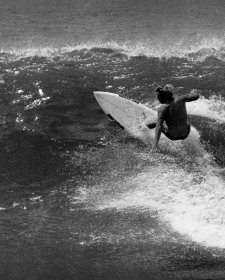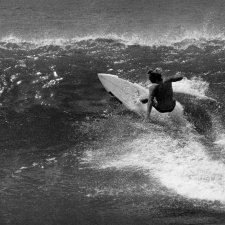Russell Crowe (b. 1964), actor, was born in Wellington, New Zealand. He moved at the age of four to Australia, where his parents worked as caterers on TV and movie sets. His big-screen debut came in The Crossing (1990), in which he co–starred with future wife Danielle Spencer. He won AFI awards for his work in Proof (1991) and Romper Stomper (1992), and played Jack Thompson’s gay son in The Sum of Us (1994). The following year he moved to Hollywood to make The Quick and the Dead (1995); soon after, he drew rave reviews as the brooding Bud White in LA Confidential (1997). The Insider (1999), Gladiator (2000), and A Beautiful Mind (2001) earned him three consecutive Best Actor Oscar nominations; he won for Gladiator (and took out the Golden Globe for A Beautiful Mind). Following the noble Master and Commander, Crowe dominated a series of tough action dramas, including Cinderella Man (2004), 3:10 to Yuma (2007), American Gangster (2007) and Body of Lies (2008). He returned to historical costume for Robin Hood (2010), Les Misérables (2012) and the Biblical epic Noah (2014) before the release of his directorial debut, The Water Diviner. His most recent role is as manipulative American media executive Roger Ailes in the miniseries The Loudest Voice (2019). Part–owner of the South Sydney Rabbitohs since 2006, he commutes regularly between the USA, the north coast of NSW and Sydney.
Stuart Spence’s portrait of Crowe was shot in 1995 at Crowe’s local pub, located 300 metres from where he was living in Sydney at the time. Crowe commissioned the image himself, at a time when celebrities were encouraged to provide their own approved publicity material to the press. Spence had worked with Crowe previously on a magazine shoot where the pair had, in Spence’s words, ‘got on like a house on fire’. The portrait of the young actor swinging on his chair was taken around the time he made his debut in Hollywood, and his career could tip either way. Although he enjoyed photographing Crowe, himself, Spence said ‘Russell had a reputation at that time for doing some pretty left field things on photo shoots, to the point where many photographers were deeply on edge if they had to shoot him.’
Collection: National Portrait Gallery
Purchased 2016
© Stuart Spence



On one level The Companion talks about the most famous and frontline Australians, but on another it tells us about ourselves.



18 November 2020
Penelope Grist charts an immersive path through Stuart Spence’s photography.



Featuring striking photographic portraits of contemporary figures from the National Portrait Gallery collection, The Look is an aesthetic treat with a lashing of je ne sais quoi.